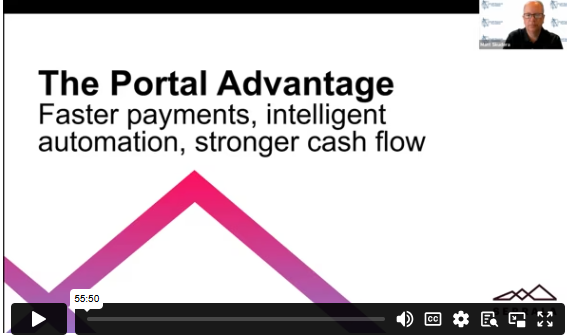As the pace of business accelerates, SAP users in all parts of their organizations are being asked to do more work with fewer resources in less time. Tax, IT, GRC, HR, and other teams are increasingly turning to automation solutions to meet these enhanced demands.
While automation is an exciting emerging technology, organizations must ensure that they have a cohesive strategy and realistic expectations for their automation efforts to be successful. Many businesses are turning to partners like
Redwood Software, a global process automation company. Redwood Software automates repetitive and time-consuming manual tasks to reduce the risk of human error and free up workers to innovate and deliver real business value.
However, the end result is more than a digital recreation of manual tasks. Redwood’s full stack platform RunMyJobs empowers companies to achieve a true automation fabric - an integrated system that seamlessly connects applications, processes, and data. This fabric becomes an organization’s central nervous system, uniting and streamlining mission-critical business processes in ways that go far beyond humans’ ability to process data on their own.
Enhancing Efficiency with Automation
Redwood’s workload automation products orchestrate complex processes and the execution of hundreds of interdependent transactions across any system or customer landscape. As the requirements for automation have significantly changed over the last decade, the company has built the most comprehensive automation portfolio available. Their capabilities form a cohesive blend of workload automation, business solutions and managed file transfer with products like
RunMyJobs, Activebatch, Tidal, Record to Report Automation, JSCAPE and Cerberus. That way, if data has to be shared with suppliers, partners, or any third party, the data becomes part of that automated end-to-end processing.
Redwood’s automation capabilities cover all of the processes within ERP, as well as adjacent processes. These include:
- Order-to-Cash
- Procure to Pay
- Business and Production Planning
- HR Processes
- Supply Chain and Logistics
- Financial Close
- Data Management Automation (across Data Warehouse, Analytics, Reporting, ETL and iPaaS solutions)
- Warehouse Management Systems
- And more
Shifting Mindsets
One of the biggest challenges for companies looking to apply automation technologies to their organizations has nothing to do with the technology at all. Many organizations need to shift their mindsets about the way that work is done to fully understand and embrace the potential that automation offers.
“There are cultural and attitude challenges that I see with organizations because if you think of ERP, it is a transactional application. It is built for people to come in, log on, and key stuff into a screen. Automation is a little bit of a challenge to their way of thinking. The idea is that you could invert this way of working so that the process just runs on its own and you don't have to enter things into a screen. Sometimes that leap away from the old manual mindset is the biggest challenge in the conversations we're having with customers,” said Devin Gharibian-Saki, Senior Vice President of Business Development and Strategy at Redwood Software.
To get internal buy-in on automation options, IT and business leaders should impress upon their co-workers that business processes should be as autonomous as possible. The move to SAP S/4HANA represents a crucial point for SAP organizations, presenting them with an opportunity to rethink all of their processes.
With many years of legacy technical debt built up in older SAP systems, SAP users may be more familiar with the systems they’ve lived in. However, companies should be on the lookout for processes that they do not want to migrate that can be accomplished much more quickly and easily through automation.
Differentiators
It is important to remember that not all automation is the same. Organizations must sift through the different types of automation to find the method that best meets their business needs. Unlike many other automation providers, Redwood Software uses a combination of APIs, pre-built connectors, and templates to automate business processes. Others use Robotic Process Automation (RPA), which simply repeats the movements that a human does. This can be useful for quickly accomplishing repetitive tasks but may leave something to be desired for more advanced processes.
“RPA has great capabilities in automating the task of a single individual person because it emulates the keystrokes and mouse movements of what a person does. But if you think of a very complex process, like a financial close as an example, you wouldn't use an RPA product or program to automate the entire end-to-end financial close. We can manage complexity because we don't emulate human keystrokes. We use APIs, pre-built connectors, and automation templates to deliver these outcomes. This eases the burden of coding significantly. Our automation is also upgradeable and scalable because it's all done through API's and connectors by design. That makes it a lot more scalable for organizations and at a much lower cost,” said Gharibian-Saki.
Redwood also uses AI capabilities as a force multiplier to add to the effectiveness of its automation solutions. By plugging into the AI capabilities on AWS, for example, Redwood can make AI part of the intent orchestration, pushing structured data back to SAP where users can leverage it to enhance business processes. This makes automation even more powerful and impactful by giving automation a much broader footprint in the end-to-end processes.
“I'm very excited about AI. We can't even imagine what the potential of that is going to be. And I do believe that for us it is a very complementary capability because AI is going to automate the systems of record in a different and faster fashion. Transactions will become smarter because AI will give more assistance and capabilities to the user, reducing the effort needed to get tasks done,” said Gharibian-Saki.
What This Means for SAPinsiders
Redwood Software offered some advice and key considerations for SAP users looking to enhance their automation capabilities.
Even if you have a hammer, not everything is a nail. Many organizations think of automation as one single tool that fits all use cases. That's not true. Companies should envision different automation solutions as a bag of tools serving different purposes. This will allow them to get the maximum value out of automation solutions across their entire SAP landscape.
“Organizations can and should combine the end-to-end orchestration and automation that we do with, for example, an RPA capability, as that can deliver better business outcomes. You might have a green screen application somewhere that has no APIs through which Redwood could automate the respective tasks, but your RPA product of choice could help in that step. The combination of those capabilities would then deliver end-to-end automation, leveraging each solution’s strengths. Make sure you have a smart understanding of where to use which technology best,” said Gharibian-Saki
.
Automation should be a cross functional exercise. Companies need a blend of people from IT and business to work together. They must organize themselves in that capacity because otherwise they run the risk of suboptimal usage or excess overhead.
Find the right use cases. Not all business processes are great candidates for automation right now. Even those that are good candidates need the right type of automation. SAP users should find trusted advisors and software providers to walk them through individualized automation options.
Use the move to SAP S/4HANA. The transformational journey that many SAP organizations are embarking on represents a perfect moment to leave legacy processes behind. Companies should evaluate which processes can be comfortably replaced by automation ahead of their move.
Help mindsets evolve. Businesses may be stuck using manual, repetitive processes simply because they are comfortable and familiar. IT and other business leaders must stress the importance of automation and how it can deliver real business value.





